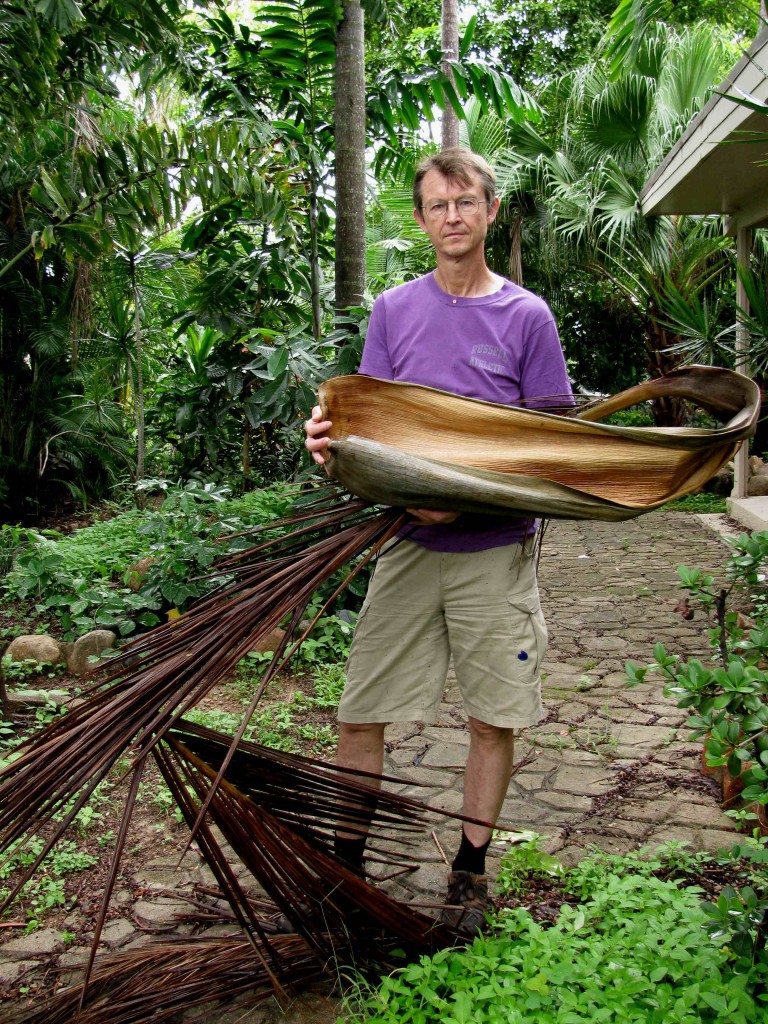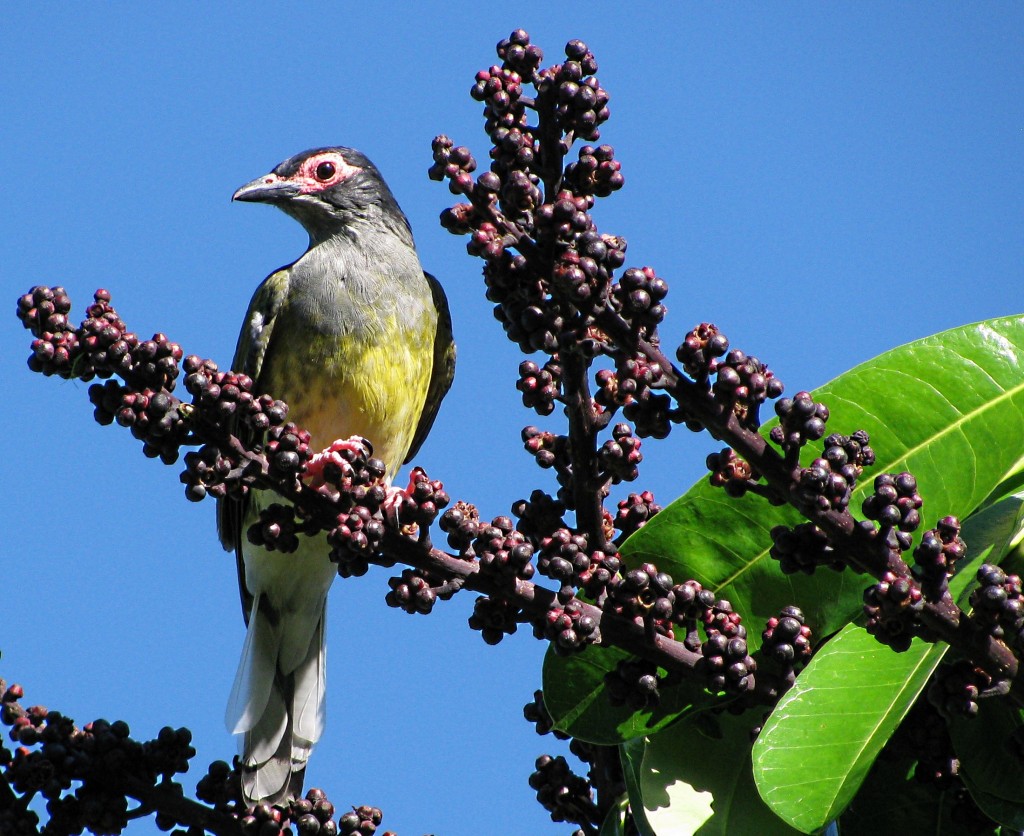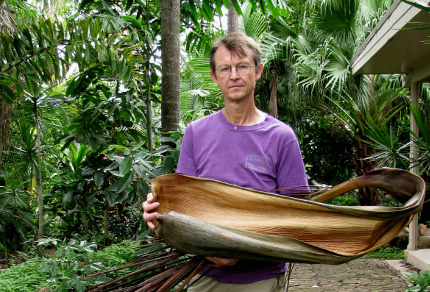In Bicentennial Park this morning, tiny biting midges attacked me with their pinpoints of fire, leaving my skin dotted with red splotches far more obvious than the minute insects that caused them. Mosquitoes, too, have made a reappearance in the parkway after weeks of freedom from their insistent proboscises. Perhaps the resurgence of biting insects is a result of the periodic rains Townsville has received during August. A recent newspaper article reported that mosquito-borne dengue fever has again reared its head in the city. Households are being encouraged to clear junk from their yards to eliminate water-collecting mosquito breeding sites.1

Vilis and Fallen Palm Leaf (© Magi Nams)
On my return to our rental house, I gathered shed palm leaves. The metres-long, dead fronds bear a leaf base shaped akin to a long bowl and provide a natural receptacle for water and hence, for mosquitoes. Days go by when none of the numerous palms in our yard drop a leaf (that sounds a bit ridiculous, but the leaves of palms have noticeably larger proportions than those of other trees), but on other days, one or sometimes several of the heavy masses of cellulose scrape down loudly through the canopies of lower trees and thud onto the ground or pavement. Occasionally, they land right outside my door or window, an occurrence that I (as a Canadian) still find fascinating and slightly startling, if less disconcerting and terrifying than the first time it happened. In the night, the scrape-and-thud of a falling palm leaf blends right in with the resonances of possum-dislodged fruits hitting our metal roof, and the romping bodies of those same possums. (Still no python has appeared to relieve us of these marsupial shenanigans.)
With the Dry Tropics year sweeping toward spring, Townsville temperatures have risen noticeably to highs of 28 or 29°C, with lows in the high teens and sometimes exceeding 20°C. Our bedcovers have thinned correspondingly, and my daily outdoor excursions have retreated to earlier hours, leaving me with long expanses of indoor time during the heat of the day. These, I have put to good use, catching up my blog posts until all days are accounted for. Please note that four posts I planned for dates in July are now (at last) published and cover the following topics: July 15 – On Dingoes, Wild Dogs, and the Australian Dog Fence; July 16 – Notes on Australian Pines and the Dinosaur Tree; July 21 – The Drover’s Life; and July 23 – About Mangroves.
Needless to say, native Townsvillians possess a rather different perspective than mine on the topic of temperatures and, in particular, what’s hot and what’s cold. When Vilis and I camped at Lake Paluma a month ago, we met a Townsvillian fellow who told us that he and his family camp at the lake every year during the coldest part of winter. The day was clear and brilliantly sunny, with a fresh morning and an afternoon high of 26 or 27°C – a perfect Canadian summer day. Vilis and I smiled. And just last week, when I joined the Townsville Region Bird Observers Club for their bird count at the Ross River Bush Gardens, I mentioned that the days were heating up. “Yes, thank goodness,” one of the women replied. “It’s been so cold.” I confess I laughed at that, but a comment made by an elderly woman after church on Sunday has broadened my perspective. She pointed out that if the daytime high is 28°C, but the temperature drops to 10°C overnight, that represents a significant drop in temperature, with the result that the night feels cold to her. However, she added that this year, Townsville’s winter was considerbly milder than in past years, which made me feel better about my temperature perceptions.

Male Figbird in Umbrella Tree (© Magi Nams)
Today’s birds: peaceful doves, brown honeyeaters, white-throated honeyeaters, mynas, masked lapwings, great bowerbirds, blue-faced honeyeater, white-gaped honeyeater, leaden flycatchers (m), helmeted friarbird, brush cuckoo, yellow honeyeaters, rainbow lorikeets, rock doves, Australian white ibises, Torresian crows, rainbow bee-eaters, Australian magpie, striated heron, Austrlalian raven, golden-headed cisticolas, welcome swallows, pheasant coucal, little black cormorant, little friarbird, magpie-larks, Australian pelican, figbirds, anhinga, black-faced cuckoo-shrikes, reef egret, rufous-throated honeyeaters, house sparrows, olive-backed oriole. Also, Cairns birdwing butterflies.
Reference:
1. Lydia Kellner. Dengue on increase in the city. Townsville Sun, Wednesday, August 18, 2010, p. 3.


